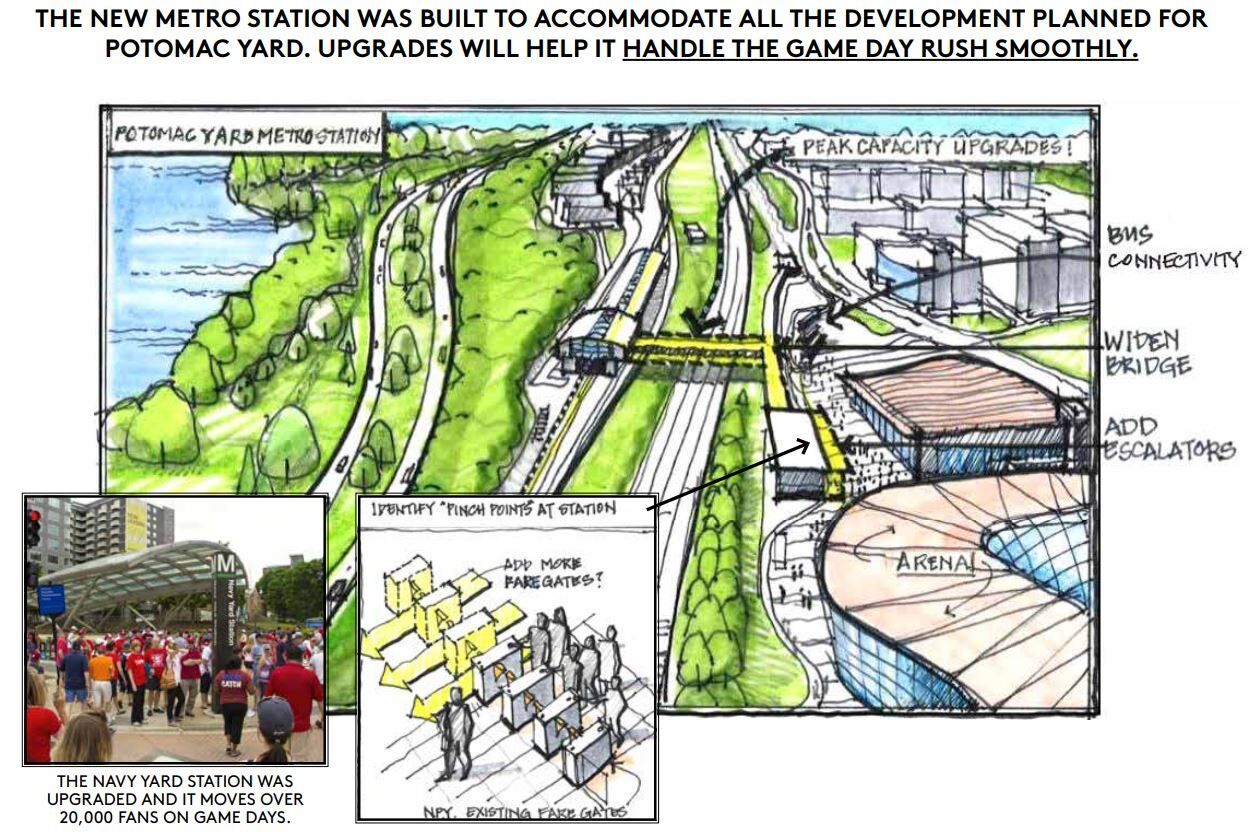Could Metro riders be stuck waiting for a ride home an hour after a game ends at the prospective Monumental Sports arena in Alexandria, Virginia?
Without any upgrades, the Potomac Yard metro station could be extremely crowded for 60 to 90 minutes after a game, when more than 10,000 sports fans are expected to be walking, biking or taking public transit out of the area, according to the Alexandria Economic Development Partnership update. Transportation plans for the proposed arena were unveiled last week.
Their report outlines how the metro station that opened in May 2023 could not handle the projected influx of passengers without significant improvements to the station’s infrastructure and more trains coming to the station.
Those major transit changes, including bus enhancements, biking infrastructure and transit-accessible parking, could cost $35 to $70 million up front to build.
Nick Donahue from Capitol Transportation Consulting, which is working with Monumental and the Virginia Department of Transportation, outlined how the Potomac Yard metro station could be expanded to accommodate thousands of riders.

“The very first thing is looking at escalators that help get you up to that bridge to kind of walk across the railroad tracks,” Donahue said. “The second thing is looking at widening the bridge to make it so there’s more space, so it can handle a greater flow of people into the station once you get to the station. Adding more fare gates, so simply increasing the ability of people to tap into the station and get down to the platform as quickly as possible.”
Beyond improving infrastructure, there will need to be more Metrorail trains and buses scheduled around game times. The consulting group said that could cost transit agencies $2.5 to $7.5 million more each year.
“With these improvements, the station will be able to move people through there,” Donahue said. “It will be a crowded station, but it will be able to … accomplish its goal of helping everyone get on the Metro and leave by that area.”
With those changes, fans would hopefully only be stuck in the crowded Metro station for 30 to 45 minutes after a game.
Donahue spoke on how effective these changes could be by comparing them to the improvements made to the Navy Yard station, when Nationals Park was built there.
“Just to kind of compare that the Navy Yard station has a similar station, it’s actually only on one line there and it typically moves about 20,000 fans on game days,” Donahue said.
The ballpark is about double the size of the anticipated Monumental arena.
“We are comfortable that with these upgrades; those who want to use the Metro system will be able to use the station coming out of the arena to go where they need to go,” Donahue said.








